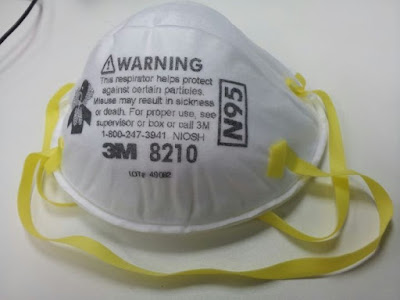MIT consortium finds mask advancement to embrace innovation, better decontamination
As I write this, Connecticut is suffering from a 2-3 percent reported infection rate of COVID-19. The statistics are impossible to know exactly because not everyone who wants to be tested has been; others have not been tested for other reasons. In some cases the tests have been inaccurate.
Despite the high rate of infection, many in our state refuse to wear masks as they are supposed to do when entering stores or when closer than six feet to another individual outside their home. A concern, too, is that people have misinformation about masks, that they are the be-all and end-all so if one is wearing so much as a homemade cloth mask or store-bought surgical mask, she can stand and chat at close range for several minutes with a friend or stranger at CVS. This is wrong.
Surgical masks are only about 50 percent effective, according to Jill Crittenden, a research scientist with Massachusetts Institute of Technology, who spoke on May 28 as part of a new series addressing COVID-19; this was called "Pandemic Response: Catalyst Conversations, Mask Innovations for Virus Transmission Control," co-sponsored by MIT Center for Collective Intelligence and MilliporeSigma. She added, "Surgical masks are not carefully rated. The ratings are actually done by the companies [who make the masks]. They are done with a different size and speed of particles."
On the other hand, one can find a better surgical mask if he gets lucky: "Nevertheless, some of them have been shown to have filtration as high as 95 percent ... The big difference is they don't fit tightly to the face," Crittenden says. N95 masks or respirators are so called because they are on average 95 percent effective, sometimes more, she says. They block 95 percent of particles 0.3 microns or larger. However, cloth masks' reliability is "even more variable" and rated generally less effective than surgical masks.
David Beattie, head of bioprocessing research and development with MilliporeSigma, responded after the talk to e-mailed questions:
When you talk about innovations in masks, what are the primary ways you are working on innovations?
Innovation in mask technology is happening in three broad areas. First are efforts aimed at creating new designs or new materials that can match the functionality of the N95 respirator, doing so at a lower cost or in a format that is more durable [and] long-lasting. The second innovation area is increasing the functionality of mask materials to increase the ability to protect the wearer, which is being done by coating the filter fibers with nanomaterials that can shorten the survival time or even inactivate the virus. Third are plans to combine the dual needs of transmission control and diagnostic monitoring into a single mask device by way of coupling fluorescent virus detectors onto the filter fibers, allowing the rapid detection of an infected individual.
When it comes to mask decontamination, what is the white-hot issue you are concerned with and how is it best addressed?
The biggest concern when decontaminating masks for reuse is potential loss of the material properties that provide protection to the user. Specifically, failures could include loss of electrostatic charge, compression of the filter material structure, clogging of filter pores and degradation of the shape or straps that allow a tight seal. All of these are best addressed by a rigorous validation plan to show that the general properties tested for classification (flow, pressure drop, sub-micron particulate capture, etc.) as well as virus retention properties do not degrade over the number of decontamination cycles proposed.
Beattie and Crittenden are part of the Pandemic Response CoLab, a project of the MIT Center for Collective Intelligence and the Community Biotechnology Initiative at the MIT Media Lab. The consortium aims to help indviduals and groups address problems stemming from the pandemic by leveraging solutions offered by the community as well as scientists and businesses.
For more information visit Pandemic Response CoLab.
More on masks on the FDA site.
PHOTO: An N95 mask by 3M designed to block 95 percent of airborne particles




Comments
Post a Comment